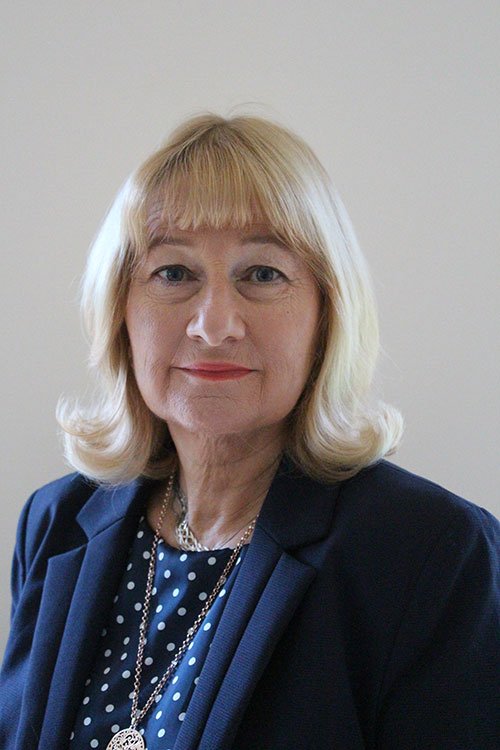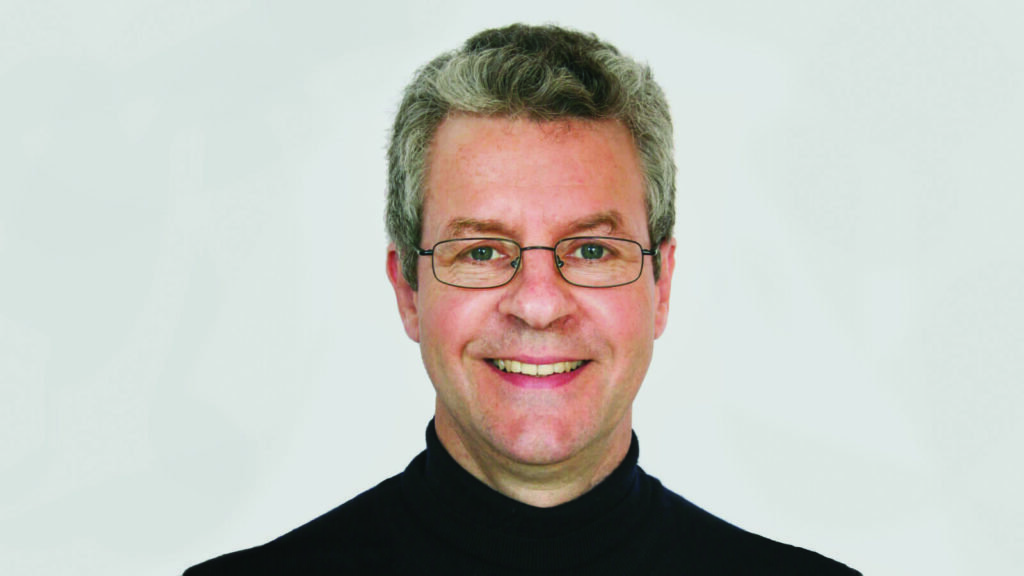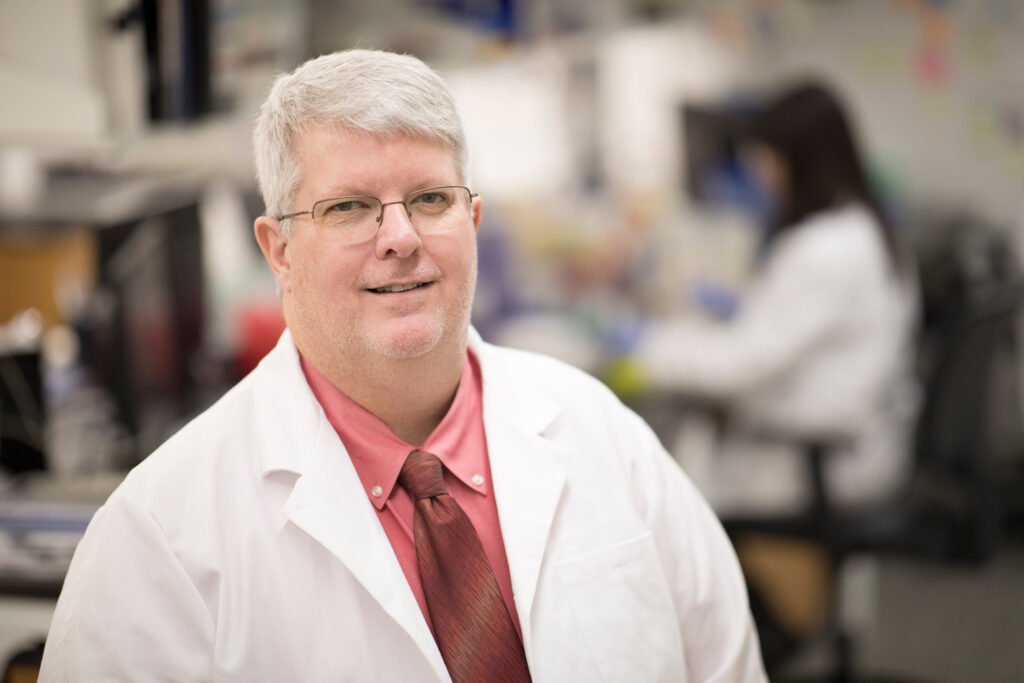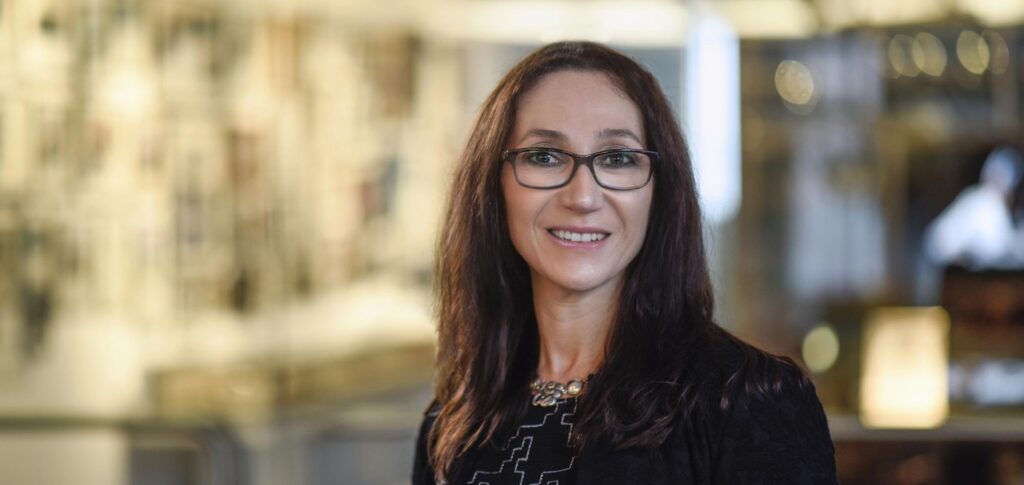Experts suggest that developing a universal coronavirus vaccine is not only possible, but could be realised in the coming years. Bette Browne reports
Vaccines against Covid-19 were developed at record speed and now the global search for a universal vaccine against all variants of coronavirus is intensifying, especially in the UK and the US. The focal point of current British research is the University of Nottingham, where scientists are working on a vaccine that would target the core of the virus instead of the spike protein on which current vaccines focus.
Successfully targeting the core of the virus would lessen, and ultimately eliminate, the need to adjust existing vaccines as the virus mutates. Proteins found in the core of the virus are far less likely to mutate so a universal vaccine would protect against all current variants. Working with scientists from the University of Nottingham, the UK company Scancell is targetting a protein in the core of the virus called the nucleocapsid or ‘N’ protein, as well as the spike protein.

“It is hoped that the N protein component of the vaccine will stimulate cells to recognise and kill virus-infected cells,” according to details published by the University of Nottingham on its website.
“The N protein is highly conserved among coronaviruses, therefore this new vaccine has the potential to generate protection not only against Covid-19 but also against new strains of coronavirus that may arise in the future.”
Prof Lindy Durrant, Chief Scientific Officer of Scancell and Professor of Cancer Immunotherapy at the University of Nottingham, commented: “Vaccines are the long-term solution and we believe our combined high avidity T-cell and neutralising antibody approach has the potential to produce a second-generation vaccine that will generate an effective and durable immune response to Covid-19.”
Prof Jonathan Ball, Director of the Centre for Research on Global Virus Infections at the university, added: “Focusing the antibody responses on the receptor binding domain of the SARS-CoV-2 virus should ensure the generation of high-titre antibodies that prevent infection. A similar DNA vaccine has already been shown to be safe and effective in cancer patients and so should rapidly translate into the clinic for prevention of Covid-19.”

Scancell’s Chief Medical Officer, Dr Gillies O’Bryan-Tear, told Britain’s Daily Telegraph: “We don’t necessarily claim it will be a pan-coronavirus vaccine, but it has got the potential to be so simply because of where it is targeted.”
Nanoparticle
In the US, scientists at Caltech (California Institute of Technology) have engineered a prototype all-in-one vaccine using a nanoparticle to hold fragments of the spike protein from multiple known coronaviruses. This was found to trigger the production of antibodies against several coronaviruses in pre-clinical testing in February. It not only protected against the coronavirus antigens in the vaccine, but also against related strains, suggesting an immune response had recognised common features across coronaviruses. This approach could thus protect against newly emerging coronaviruses in the future.
Much of the work at Caltech is being led by the lab of Prof Pamela Bjorkman and details on progress towards a universal coronavirus vaccine were published in February in the journal Science. The US National Institute of Allergy and Infectious Diseases (NIAID) announced as far back as November 2020 that it would fund a number of projects to advance work on pan-coronavirus vaccine candidates.
“With multiple promising SARS-CoV-2 vaccine candidates now under development, NIAID is looking ahead to potential pan-coronavirus (pan-CoV) vaccine candidates capable of providing broad protective immunity to multiple CoV strains,” the agency announced.
“Getting there necessitates highly collaborative, multidisciplinary programme projects to incorporate understanding of CoV virology and immunology, immunogen design, and innovative vaccine and adjuvant platforms and technologies.”
As work intensified this year, NIAID Director Dr Anthony Fauci underscored the need for such a vaccine. Speaking at the virtual annual meeting of the American Association for the Advancement of Science on 8 February, Dr Fauci called the rapid development of Covid-19 vaccines the “success story” of the pandemic.
“Something that would have taken years to do was accomplished in a matter of months, less than a year,” he declared.
“This is purely a reflection of scientific advances and the work that was put in for the prior decade for the development of this platform technology.”
Universal flu vaccine
Dr Ted Ross (PhD), the Director of the Centre for Vaccines and Immunology at the University of Georgia, has been developing a universal flu vaccine for the past 15 years. In 2019, his team was awarded a contract worth $130 million (€109 million) to develop such a vaccine. It was one of the largest contracts ever issued by the National Institutes of Health (NIH).

But in March of 2020, when it became clear that Covid-19 was becoming rampant across the globe, Dr Ross’s team switched to working on a universal coronavirus vaccine. The approach focuses on regions of the SARS-CoV-2 virus which are important for stimulating antibodies. Algorithms are used to analyse the important parts of multiple virus strains and assemble them into a single vaccine.
“Now that we’re starting to see more variants come up, it starts to give us a chance to really test against a more broad reaction of strains, which is what’s going to be needed to know if it’s actually universal or not,” Dr Ross told Wired magazine. The plan is to start the first trials in the summer of this year. Back in a pre-Covid world it was rare for a vaccine to be developed in fewer than about seven years. Therefore, the idea that one could emerge against Covid-19 within 12 months had been met with some scepticism. Yet it took less than a year to get a vaccine into the arms of frontline healthcare workers and now there are over half a dozen in use around the world. Some 23 others are in phase 3 large-scale efficacy tests.
It has been a monumental achievement for science and medicine. But most breakthroughs do not happen overnight – usually careful work has been ongoing for a considerable time. This was the case with the Covid-19 vaccines and now the search for a pan-coronavirus vaccine is benefitting from some aspects of that work.
The extraordinary speed at which current vaccines have emerged was due to decades of previous work, including research on the original SARS virus and HIV. But it was also thanks to a team of Chinese scientists led by Prof Yong-Zhen Zhang of Fudan University in Shanghai, who on 10 January 2020 uploaded the genetic sequence of the coronavirus to a public site. “Once we got the sequence, we pulled the trigger to ask how fast we could go,” Dr Barney Graham, the Deputy Director of the US National Institutes of Health’s Vaccine Research Centre, told Stat News.
SARS vaccine
Many of the research teams seeking to develop vaccines for SARS-CoV-2 had worked on vaccines for the SARS virus, which caused a 2003 outbreak, and MERS, which first emerged in 2012. The earlier projects had identified the spike protein component of the coronaviruses as a key target for a vaccine, which aided scientists in developing potential vaccines. “What really helped was the knowledge gained from the SARS-1 infection,” US immunologist and researcher Prof Rama Rao Amara at Emory University in Atlanta, Georgia, US, told Stat News.
Previous strategies for developing vaccines – obtaining the virus and weakening or inactivating it – are protracted processes. However, newer approaches meant scientists only needed to know the virus’s genetic sequence. Less than 10 weeks after publication of the SARS-CoV-2 sequence, a team from the US NIAID and Massachusetts-based Moderna had a vaccine ready for a phase 1 trials.

One way scientists discovered so much about the spike protein was by applying methods developed over many years. “Traditionally, vaccines can take an average of up to 10-to-20 years to go through this process. The fastest we have been able to develop a vaccine is the mumps vaccine in four years and the Ebola vaccine in five years,” according to Dr Maria Elena Bottazzi, Associate Dean of the National School of Tropical Medicine at Baylor College of Medicine and Co-Director of the Centre for Vaccine Development at Texas Children’s Hospital, Houston, US.
“We have learned from this pandemic that prior research and development knowledge and the advent of new technologies can be leveraged and change the way we discover, produce and evaluate vaccines – leading to an acceleration of the process.”
But sometimes potential breakthroughs can go unrecognised. In 2016, for example, Dr Bottazzi and her colleagues applied for support from the US government to develop a pan-coronavirus vaccine, but did not receive it, she told The New York Times. “They (the government) said there’s no interest in pan-corona.”
Her team lost funding for developing a SARS vaccine despite demonstrating it worked in mice. They also showed it was not toxic to human cells and could be manufactured at scale. With no funding to start clinical trials, the scientists moved on to other research. Subsequently, Dr Bottazzi and her colleagues used the technology to develop a vaccine for Covid-19.
Another factor in the speedy development of coronavirus vaccines was advances in computational immunology. Understanding the immune system is a tall order, according to Prof Margaret Ackerman, an immunologist at Dartmouth College, in Hanover, New Hampshire, US. That is why so many scientists have turned to computational and informatics approaches.
Mathematical models have become so advanced it is possible to predict the parts of a novel pathogen that will be recognised by B-cells and T-cells or create targeted immunotherapies against tumour cells. “These approaches offer incredible speed at getting from genetic sequence to a candidate vaccine. Nothing can compete with that,” Prof Ackerman told the journal Nature Medicine.
Human Vaccines Project
“Collectively, studies now suggest that developing a universal coronavirus vaccine is scientifically feasible,” Dr Wayne Koff, CEO of the Human Vaccines Project, and Dr Seth Berkley, CEO of Gavi, the Vaccine Alliance, wrote in February in the journal Science. The Human Vaccines Project is a non-profit public-private partnership aimed at accelerating development of vaccines and immunotherapies against major infectious diseases and cancers by decoding the human immune system. Gavi, the Vaccine Alliance, has a similar mission and is also working to increase access to immunisation in poor countries as a co-leader of the WHO’s COVAX project.
“The recent convergence of technological advances in biomedical, computing, and engineering sciences has ushered in a new era in antigen and vaccine discovery,” Dr Koff said. “High-performance supercomputing and machine learning, coupled with structural modeling, have the potential to greatly accelerate identification of common antigenic targets shared across coronaviruses. Databases of genetic sequences of animal isolates of coronaviruses can be used to model the evolutionary emergence of the viruses.”
Both doctors stressed this must be a “worldwide effort”. A roadmap is needed to set out the core scientific issues and a framework for funding and sharing of information, data, and resources.
“Although this pandemic is far from over, we now have the tools to end it, with the largest and most rapid global deployment of vaccines under way. That we got this far so quickly is remarkable, but next time we might not be so lucky. More virulent and deadly coronaviruses are waiting in the wings. Thus, the world needs a universal coronavirus vaccine.”
None of that can happen until all stakeholders across governments, industry, academia, and nongovernmental organisations, recognise that a universal coronavirus vaccine is a global public health priority, they emphasised.
“If we choose to wait for the next coronavirus to emerge, it may be too late, as it was with Covid-19. Creating the tools for preventing the next coronavirus pandemic is within our means and should be considered a global health priority. We can either invest now or pay substantially more later.”
Finance is an essential factor. The US, UK and a number of other countries, have provided billions in support to companies working on developing vaccines. The budget for the US Warp Speed vaccine development programme under former President Donald Trump was as high as $18 billion (€15 billion). The New York Times reported that US agencies provided $2.5 billion to Moderna to assist in the development of its vaccine and to buy doses. The UK spent £12 billion (€14 billion) to help develop and secure vaccines. Many scientists and medical experts now say the focus must be on speeding up the search for a universal vaccine against coronavirus and backing the effort with substantial funding.
Dr Kayvon Modjarrad, Director of the Emerging Infectious Disease Division at the US Walter Reed Army Institute
of Research in Silver Springs, Maryland, US, is one of many scientists who for years have called for one vaccine against all coronaviruses.
Global effort
Other scientists and doctors agree. Among them are Prof Eric Topol, a Professor of Molecular Medicine at the Scripps Research Institute in San Diego, US, and cardiologist Dr Dennis Burton. They have called upon scientists to come together in another large-scale vaccine-creation project. They want an international effort, backed up by hundreds of millions in funding.
“Such pan-virus vaccines could be made in advance and deployed before the next emerging infection becomes a pandemic. We call for an investment now in basic research leading to the stockpiling of broadly effective vaccines,” they declared in February in the journal Nature.
“As we’ve seen for influenza, one virus strain can cause more deaths than a world war and result in trillions of dollars of economic damage. Surely, global governments that together spend $2 trillion (€1.7 trillion) a year on defence can find a few hundred million dollars to stop the next pandemic?”
Dr Topol and Dr Burton acknowledge the difficulties inherent in the development of a pan-coronavirus vaccine, but reject the scepticism expressed by some critics. “What do the fiercest critics of our proposals argue? They point to the difficulties of isolating neutralising antibodies with sufficient potency and breadth to be effective. They note the complexities of rational vaccine design. They underscore concerns about pathogen evolution and resistance to antibodies. They ask why this approach has not been widely applied already.
We have learned from this pandemic that prior research and development knowledge and the advent of new technologies can be leveraged
“Generating very broad, very potent neutralising antibodies can be difficult. But research to find the best antibodies and improve them has been highly successful in recent years. It might not always be possible to obtain the ideal breadth of responses across a whole family of viruses. But compromises can be made, and methods for delivering cocktails of antibodies and vaccines are becoming feasible.”
Unlike a reactive programme, the doctors say their projects could begin on a large scale immediately. “Thanks to work already done on other viruses, particularly HIV and influenza, the approaches are understood and the infrastructure is in place.
“Investments made so far in basic science – including virology, genomics, immunology and structural biology – have afforded us a remarkable opportunity to get ahead of further SARS-CoV-2 evolution and put us in a powerful position of readiness for new viral pathogens.”
They estimate the investment per virus from bench to phase I trials is likely to be between $100-200 million over several years, with the costs borne by public–private partnerships between governments, philanthropy, and industry.
“Organisations such as CEPI (Coalition for Epidemic Preparedness Innovations), the COVAX facility and GAVI, the Vaccine Alliance, could help to convene the expertise and initiate the negotiations needed to deliver the types of vaccine we propose.”
The Norwegian-based CEPI, launched in 2017 to develop vaccines to stop future epidemics, gave the current search for pan-coronavirus a significant boost on 31 March when it announced $200 million in funding will be allocated for development of vaccines that provide broad protection against SARS-CoV-2 and betacoronaviruses.
“CEPI aims to build on the technological advances that have been made in response to Covid-19 to develop an all-encompassing vaccine that could work against known Betacoronaviruses, including SARS, MERS, and COVID-19, and could potentially be used to quickly suppress future outbreaks of other novel coronaviruses that might jump into the human population,” said Dr Melanie Saville, Director of Vaccine Research and Development at CEPI, in announcing the pan-coronavirus project.
While work to develop such a vaccine would be extremely challenging, it would bring major rewards, she said. “This will be an incredibly challenging area of work, but one with tremendous benefits. A broadly protective coronavirus vaccine could help avert another Covid-19-like pandemic, reduce the need to continually update vaccine components, and ultimately reduce virus circulation.
“The emergence of a coronavirus combining the transmissibility of Covid-19 with the lethality of SARS or MERS would be devastating to civilisation. Finding solutions to mitigate the threat posed by coronaviruses is thus an issue of the greatest global urgency.”

